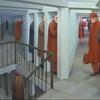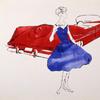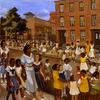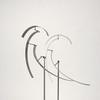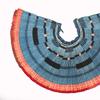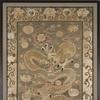Motion and Motive
- November 02, 2022 12:14
“The first inspiration I ever had was the cosmos.”
— Alexander Calder
One of the most widely praised and influential of all modern sculptors, Alexander Calder became world-famous primarily for creating kinetic sculptures, sculptures in which a key element of the composition is movement itself.
Innovative and prolific, Calder has been celebrated as a visionary, a pioneering talent, and a key contributor to the definition of a twentieth-century aesthetic. His place in the pantheon of modern art is secure. But what if Calder merely applied a modern gloss to an ancient way of making art?
Calder is said to have discovered his signature style in 1930. As the story goes, it originated in a moment of inspiration he experienced while on a visit to another artist’s studio.
The studio Calder was visiting was the studio of the painter Piet Mondrian. At the time, Mondrian was a leading light of the European avant-garde; he was dedicated to the articulation of a universally rational aesthetic structure, a utopian vision of art which led him to abandon figurative work altogether, and winnow his representational vocabulary down to only what he considered the most essential elements: solid fields of primary colors, neatly arranged within the boundaries of basic geometric forms.
Mondrian’s abstract “neoplastic” paintings electrified Calder. It was the moment, he said later, that he embraced abstract art.
After returning to his own studio, Calder went back to work, struggling to produce the most purely abstract form of sculpture he could possibly imagine. Over the course of these early experiments, he developed his first kinetic sculptures.
By the following year, Calder had created a series of small but astonishing kinetic sculptures, intentionally useless machines, constructed of moving parts powered by motors. Calder’s creations were christened “mobiles.”
It was his friend and fellow artist Marcel Duchamp who first coined the term. In French, the word mobile can be used to refer to “motion,” in the sense of an object moving through space. However, it can also be used to refer to “motive,” in the sense of a reason or purpose. This dual meaning of the word made it even more fitting. Without a doubt, Calder had just discovered his own reason for sculpture. The artist had discovered his purpose.
Yet the monotonous, prescribed movements of the motorized mobiles dissatisfied Calder. The solution he developed in 1932 was to create sculptures which were powered not by motors but by the power of momentum, by touch, or by the movement of air. The earliest of these were made out of wood, wire, and found objects, materials with which Calder had been working since the 1920s.
In 1948, Calder came close to selling out an entire solo show. The hugely successful exhibit in Rio de Janeiro catapulted him into the position of being one of the most internationally renowned American sculptors of the mid-twentieth century.
Around the world, Calder was applauded for making a decisive break from the expectation that a statue should be a static object. What set him apart was the fact that Calder put his work in motion. He made it interact with its environment. Not only that, he made it interact with its environment in unexpected ways.
How a kinetic sculpture interacts with its environment is as random as the weather. The shape of each component may be fixed, the path of its motion may be rigorously planned, yet there is no way to know when a component might be blown this way or that by a swelling breeze. Calder’s work incorporates the passage of time. It reaches out to the natural environment. It effects a modern monumentalization of the wind chime.
In fact, for about as long as human beings have been capable of making anything, we have been making art like this. Even before we painted on the walls of caves, and long before we ever chipped a fleck of stone in an effort to capably render a human or animal figure, we were creating wind chimes. This way of making art must have existed in one form or another not just for thousands of years, but for hundreds of thousands of years.
From Ancient Greece to Ancient China, written sources and surviving artifacts testify to what was by then an even more ancient practice of hanging up wind chimes, richly decorated, sometimes with mirrors, sometimes with bells, for purposes both ritual and practical. In Indonesia, wind chimes made of shells were hung up around farms scare birds away from crops; in Finland, pyramid-shaped hanging sculptures, fashioned of reeds or straw, were said to ensure a good harvest in the coming year.
Calder’s bounty came in the form of an illustrious artistic career. His mobiles got the attention of the highly regarded Galerie Maeght in Paris. He received plaudits from Albert Einstein and Jean-Paul Sartre. His artwork became a mainstay of modern style, a familiar fixture of elite East Coast American cultural institutions, from the Guggenheim to the Whitney, from the Museum of Modern Art in New York to the National Gallery of Art in Washington, DC. The impact of Calder’s work guaranteed his elevation to the status of a defining figure in Mid-Century American Modernism, alongside household names like Frank Lloyd Wright, Frank Gehry, Jackson Pollock, Jasper Johns, Georgia O’Keeffe, Edward Hopper, Mark Rothko, Robert Motherwell, and Willem de Kooning.
Calder imitations proliferated. The word “mobile” entered our vocabulary as a well-known term for a hanging sculpture, and for pretty much anyone born in the latter half of the twentieth century, or later, a Calderesque contraption was among the very first works of art we ever saw, an object of fascination to us in our cribs.
“Calder’s work — so fluid, so open, as much a matter of voids as of volumes — is both a spectacular riposte to Victorian addiction to the solidity of sculpture… and a reaffirmation of the enduring artistic power of the third dimension, reframed in the language of a new age.”
— Jed Perl, Calder: The Conquest of Time
In countless cities across the globe, Calder’s vibrant abstract sculptures enliven the public squares and the great halls of major museums. They stand (or hang) on display from Australia to Israel; from Italy to Venezuela; from Portugal to Colombia; from the United Kingdom and Spain to Mexico, Canada, and the United States.
To this day, many of Calder’s most beloved artworks remain in New York City, including one of the most beloved of all, Sandy’s Butterfly, a perennial favorite among visitors to the Museum of Modern Art’s sculpture garden. With its wing-like panels, Sandy’s Butterfly beautifully recreates the appearance of a butterfly in flight.
Perl, Jed. Calder: The Conquest of Time. Knopf, New York (2017).







